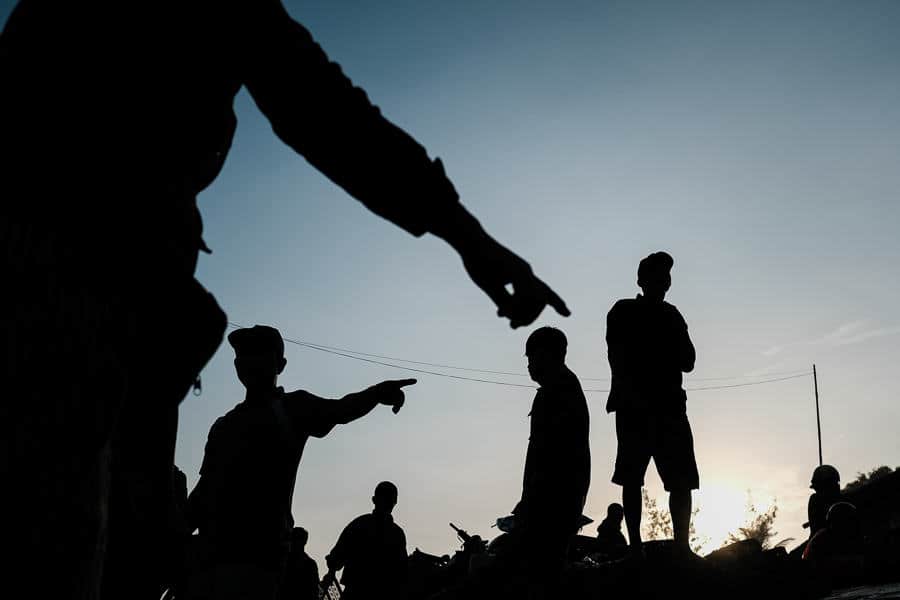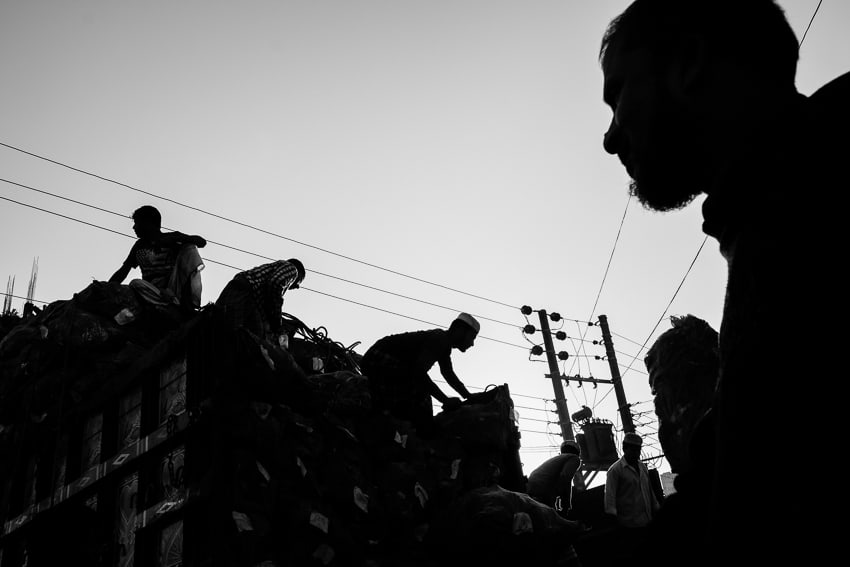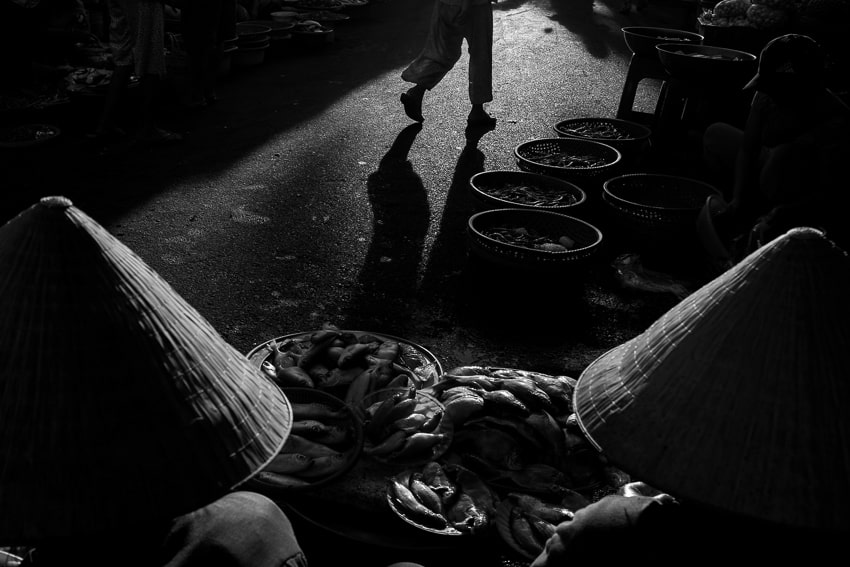Tutorials / COMPOSITION, ALL TUTORIALS

How to photograph busy situations
Getting busy with it!
Asia is a busy, dynamic place, and when you’re looking for great people photographs, you’ll inevitably find yourself in situations where there’s a lot going on. Here’s how to manage them.
Exciting scenes can be ruined by a messy foreground, so remember that less is more. The simpler your composition, the better your image!
Try using the sky or the ground as a background and positioning yourself (with the right light) so that the person you are photographing is between your camera and a largely plain, neutral background. This will really help people to “pop”, especially if they’re dressed in vibrant clothes.
Silhouettes are timeless and just possibly they’ve been overdone, but they can still be your best friends in very messy situations. They’re also extremely popular with people who buy prints (just saying).
If you’re photographing on a cloudy day, expose first for the clouds and then compose your frame to work with the shapes of the people in front of you. This means getting low to the ground – definitely easier with a tilt screen. It’s time to get dirty and “suffer” for your art. Trust me, it will be worth it when you manage to separate your subjects and create a really powerful composition.
You could also try using one of your silhouetted subjects to frame your picture. Fill a third of the frame with this one silhouette, and then let the rest of the image fill with other interesting silhouettes. The end result? Complex layers in a simplified composition.
This is the easiest trick of all, and it can work wonders for your composition. Physically walking toward a person will remove a lot of the mess around them. Even better, if you have a prime lens, composing for a shallow depth of field and moving closer will simplify the background around your subject. However, the risk is that you end up with lots of people photographs that all look the same. Play with what’s around your subject for more creative portraits, but remember: keep it simple!
Incidentally, if anyone looks at these portraits and feels that I’ve been disrespectful by “sticking my camera in someone’s face”, it’s worth remembering that cultural norms are different in Asia, and people generally have less of a sense of personal space. Which means that in Asia, it’s generally very easy to get close to people.
Take a minute to imagine that you are photographing in a cluttered factory. Everywhere you look there are plastic bags, pieces of broken machinery, and wooden scraps littered across the floor. As the photographer, it is your duty to find the beauty or the captivating composition in this situation. Then you look up and see spots of light caused by the sun filtering through some holes in the ceiling. The light appears to create an eerie atmosphere and gives the factory a moody, dramatic feel.
Now that you’ve noticed this light, expose your frame for the highlights! By doing so, everything in your frame that is darker will appear to be a smooth, black gradient. All the clutter you initially saw will no longer exist. Now, all you have to do is wait for your subject to walk into the light…
There are several ways to expose for the highlights. I prefer to point my camera to the sky using the exposure lock button. The camera will lock the exposure of the sky (which is usually the brightest thing around) and will then only expose for these bright lights. Another option is to find the right exposure on manual mode or simply underexpose by two or three stops on shutter speed or aperture mode.
Proper use of the foreground is one of the most efficient and effective ways to compose in an overly busy situation.
There’s a natural temptation to show just how busy a scene is, but the more elements you try and include in the frame, the more frustrated you’ll become. Additional elements create direction, lines and shapes that will lead and confuse people’s eyes when they see your image.
A perfectly composed image will be able to convey the feeling that the location is chaotic. Try hiding a lot of the unnecessary elements in your background with a foreground that tells a more profound story. A piece of someone’s hand in the corner and/or a blurry face in the other corner can give the viewer the perception that the location is busy while covering some of the mess. Using the foreground well also creates a natural frame that directs people’s eyes to the main subject. Again, the more straightforward and simple your composition, the better.
Remember, you don’t have to avoid messy circumstances to get clear compositions. Work with the light, move toward your subject, get on the floor, expose for the highlights and utilise the foreground – then you’ll be a flexible and resourceful travel photographer, ready to get great images in any situation, no matter how busy!
One thing that will happen when you photograph busy situations is that you will end up with a lot of layers, a lot of things happening at different planes of your frame. These are more difficult scenes to shoot as all layers need to be in place to avoid creating a messy image.
As we discussed earlier, finding a clean background will first help you to simplify the frame and allow you to add more layers. But there are more techniques you can apply.
Find a static frame
I am not sure this is the right expression for it, but this is what came up one day as I was explaining it to a student. When I say finding a “static frame” I mean finding a static element in the frame that we will use to frame the rest of the action.
First, by having this static element, we only need to wait for one, two or three more elements to come into place in the frame. That already simplifies the composition a little bit. Also, if the static frame you have found is on the side of your frame, it can help to create lines that will lead straight into the rest of the action in your frame. For example, a person in the foreground who’s eyes lead to the action in the background.

Using the same concept, if you manage to find two or three static elements already in place in your frame, you’ll only need to wait for one or two more to come into place. The important thing when adding many elements in our frame is to fill the frame. Our elements in the frame need to bounce back at each other, leading the eyes through the whole frame. Leading empty and irrelevant areas in your frame will break that rhythm.

Having two hats as static elements, I only needed one more thing interesting thing to happen in the background.

I have read this article, it is very helpful. Thank You.
Excellent advice
In your articles I learn more than in many classes that I pay for.
Etienne – I clicked on the “easy to get close to people” hyperlink and it took me into your Google Drive, which I suspect isn’t meant to happen!
Thanks Tim, just fixed it!
Amazing photos and information!!!! Thank you.
thanks Ibis!